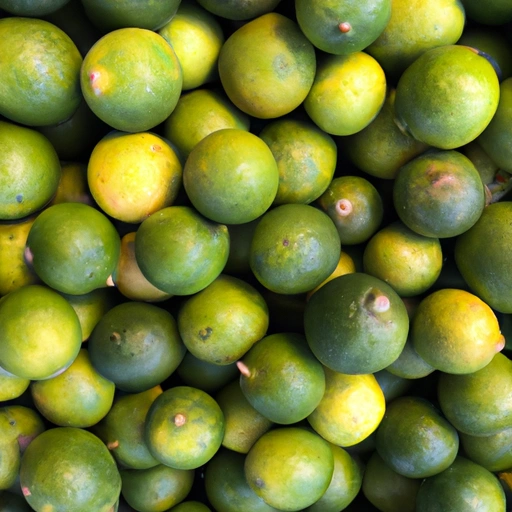Key Lime
Description

Key lime (Citrus aurantiifolia) is a citrus fruit known for its intense, aromatic flavor and small size. Originating from Southeast Asia, it is now widely cultivated in warm climates, particularly in the Florida Keys, from which it gets its name. The fruit has a higher acidity, a stronger aroma, and a thinner rind than the more common Persian lime. Key limes are prized for their unique flavor, which is both tart and slightly sweet.
Common uses
Key limes are often used to add a tangy zest to various dishes and drinks. They can be found in marmalades, pastries, and other sweets, as well as in savory dishes. Their juice is frequently used to enhance the flavors of seafood and meats, while the zest can be a fragrant addition to spice rubs and marinades.
Nutritional value
Calories
A single Key lime (approximately 22g) contains about 8 calories (33kJ).
Protein
Key limes provide roughly 0.3g of protein per fruit.
Fat
These limes are low in fat, with less than 0.1g per serving.
Carbohydrates
Each Key lime has about 2.8g of carbohydrates, most of which come from natural sugars and dietary fiber.
Vitamins
Key limes are an excellent source of vitamin C, with one lime providing about 11% of the recommended daily intake (RDI). They also contain small amounts of vitamins A and B complex.
Minerals
They include trace amounts of minerals such as calcium, iron, magnesium, and potassium.
Health benefits
Due to their high vitamin C content, Key limes can contribute to immune system health, collagen production, and the absorption of iron from plant-based foods. The antioxidants present in Key limes may help fight free radicals and promote overall health.
Potential risks
Consuming Key limes or their juice in moderate amounts is generally safe for most people. However, excessive consumption can lead to dental erosion due to the high acidity, and some individuals may experience acid reflux or gastrointestinal discomfort.
Common recipes
Key lime pie, limeade, ceviche, and Key lime cookies are some common recipes that showcase the distinct flavor of Key limes.
Cooking methods
Key limes can be juiced, zested, or used as a garnish. Their juice is often used to marinate or cook foods, taking advantage of its natural acidity to tenderize meats and seafood.
Pairing with other ingredients
Key limes pair well with seafood, chicken, coconut, berries, mint, and a variety of herbs and spices. They can also be used in combination with other tropical fruits for a refreshing flavor profile.
Summary
Key lime is a tropical citrus fruit celebrated for its bold, tart flavor, integral to many dishes and drinks around the world. It boasts significant amounts of vitamin C and has a number of culinary applications, from beverages to desserts. While it's a healthy addition to most diets, moderation is recommended to avoid any potential risks associated with its acidity.